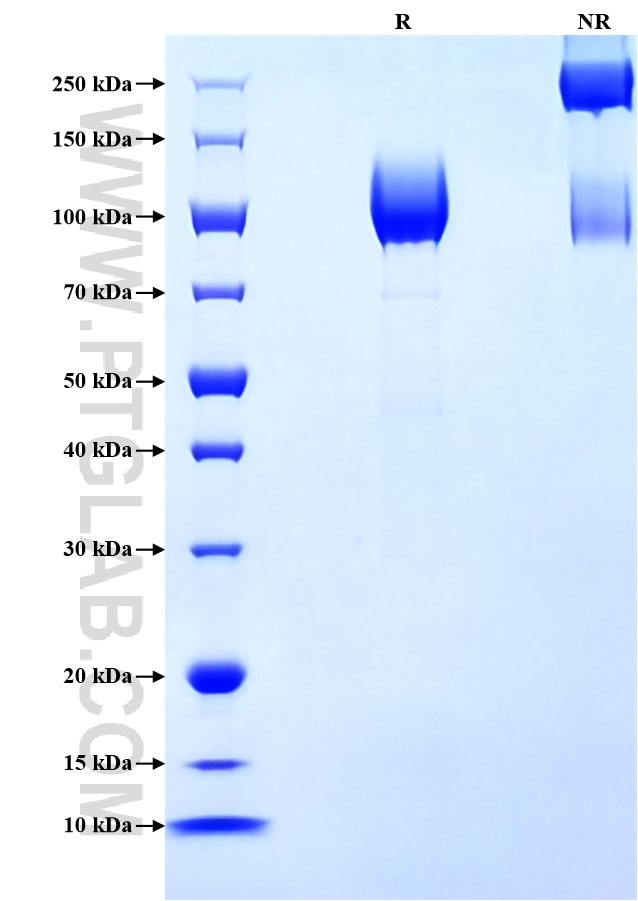Recombinant Mouse PDGFR beta protein (rFc Tag)
Species
Mouse
Purity
>90 %, SDS-PAGE
Tag
rFc Tag
Activity
not tested
Cat no : Eg1533
Validation Data Gallery
Product Information
| Purity | >90 %, SDS-PAGE |
| Endotoxin | <0.1 EU/μg protein, LAL method |
| Activity |
Not tested |
| Expression | HEK293-derived Mouse PDGFR beta protein Leu32-Val531 (Accession# P05622-1) with a rabbit IgG Fc tag at the C-terminus. |
| GeneID | 18596 |
| Accession | P05622-1 |
| PredictedSize | 82.4 kDa |
| SDS-PAGE | 85-125 kDa, reducing (R) conditions |
| Formulation | Lyophilized from 0.22 μm filtered solution in PBS, pH 7.4. Normally 5% trehalose and 5% mannitol are added as protectants before lyophilization. |
| Reconstitution | Briefly centrifuge the tube before opening. Reconstitute at 0.1-0.5 mg/mL in sterile water. |
| Storage Conditions |
It is recommended that the protein be aliquoted for optimal storage. Avoid repeated freeze-thaw cycles.
|
| Shipping | The product is shipped at ambient temperature. Upon receipt, store it immediately at the recommended temperature. |
Background
Platelet-derived growth factor receptor β (PDGFR beta) belongs to the family of receptor tyrosine kinases and is widely known for regulating cellular functions like proliferation, angiogenesis, migration, and invasion (PMID: 33744312). It is particularly involved in the development of the vascular system and early hematopoiesis. PDGFR beta signaling has been implicated in a range of diseases, including certain types of cancers where autocrine activation of PDGF signaling pathways is involved. It also plays a role in pathological mesenchymal responses in vascular disorders such as atherosclerosis, restenosis, pulmonary hypertension, and retinal diseases, as well as in fibrotic diseases, including pulmonary fibrosis, liver cirrhosis, scleroderma, glomerulosclerosis, and cardiac fibrosis (PMID:18483217). PDGFR beta localize to the plasma membrane that is abundantly expressed in stromal and mural cells (PMID: 27260205).
References:
1. Yeeravalli R. et al. (2021). Hematol Oncol Stem Cell Ther. 14(4):275-289. 2. Andrae J. et al. (2008). Genes Dev. 22(10):1276-1312. 3. Zhao Y. et al. (2016). Cytotherapy. 18(7):816-827.
